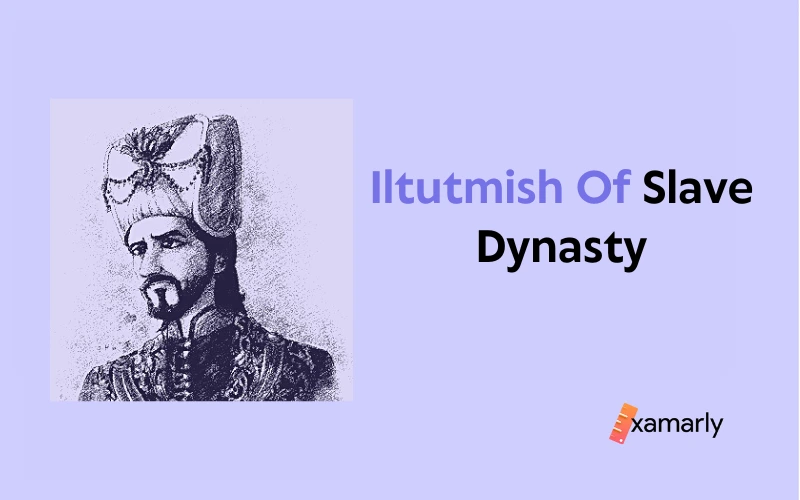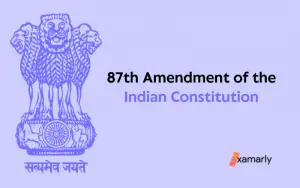Iltutmish was one of the most significant sultans of the Delhi Sultanate in medieval India. The article provides a detailed account of his early life, his rise to power, and his accomplishments during his reign.
He was the third ruler of the Delhi Sultanate. Born as Shams-ud-din Iltutmish in Central Asia, he was sold into slavery and brought to the court of Sultan Qutb-ud-din Aibak in Delhi.
He was a vital Mamluk/Slave Dynasty monarch. Born to a slave, he rose to power and became the Muslim ruler of Delhi. His reign as the Sultan of Delhi lasted for almost 26 years.
- Iltutmish: Early Life & his Rise to the Throne
- Iltutmish – Facts for UPSC
- Iltutmish – The Choice for Sultan
- Achievements and Growth of the Kingdom under Iltutmish
- How Iltutmish Saved India from Mongol Invasions?
- Iltutmish's Invasion of Bengal and Bihar
- Additional Victories of Iltutmish
- Iltutmish's Reign: Art, Architecture, and Literature
- Policies under Iltutmish's Rule
- Death of Iltutmish
- Conclusion
- FAQs about Iltutmish
Iltutmish: Early Life & his Rise to the Throne
He was born in the early 13th century in the town of Ilutamish near Bukhara in present-day Uzbekistan. He was born into a Turkish slave family and was sold into slavery at a young age.
Iltutmish was brought to the court of Sultan Muhammad Ghori, who was one of the most powerful rulers of the time. He showed promise and was trained as a soldier and administrator in the court. He later came into the service of Qutb-ud-din Aibak, who was a prominent general and the founder of the Delhi Sultanate.
Under Qutb-ud-din Aibak’s patronage, he rose through the ranks and became a trusted member of the court. He married the daughter of Qutb-ud-din Aibak and was appointed as the governor of Badaun.
His life took a dramatic turn when Qutb-ud-din Aibak died in 1210. The Sultanate was in disarray, and there was a power struggle among the nobles for the throne. His claim to the throne was challenged, and he was imprisoned. However, he managed to escape and fled to the town of Kalpi.
Despite being on the run, he continued to rally support and gather troops. He returned to Delhi in 1211 and defeated the opposing forces, thus establishing himself as the Sultan of Delhi. This marked the beginning of his long and eventful reign as one of the most significant rulers of the Delhi Sultanate.
He was the first Muslim sultan to establish Delhi as an imperial capital. Thus, he was regarded as the genuine founder of the Delhi Sultanate.
He successfully defended Delhi’s throne from Yeldoz, Qubacha raids, and Mongol invasions. He strengthened his dominance over them by destroying the northern Rajput forces. He produced coinage in his honor, made Delhi a splendid capital, and made his dominion hereditary.
Related Article: Art and Architecture of Delhi Sultanate.
Iltutmish – Facts for UPSC
- His father was a Turkish nobleman from the Ilbari tribe.
- Qutubuddin Aibek had bought him for an incredible sum. Thus he owned Iltutmish as a slave.
- During his early years of struggle, he obtained excellent education & gained a thorough understanding of the world.
- He advanced to become his master’s son-in-law, within a decade.
- He assumed the role of governing the Iqtas of Gwalior and Baran (now Bulandshahar) cities.
- In 1211, he deposed Aram Shah despite his refusal to cede power.
- He shifted his capital from Lahore to Delhi.
- He disregarded the Indus River Valley throughout the first phase of 1220 while it was being fought over by the Khwarazmian rulers, the Mongols, and Qabacha.
- After the Khwarazmian and the Mongol threat abated, Qabacha established dominance over the region. Although he conquered his territory in 1228–1229.
- The Qutub Minar, as we see it today, was completed by him.
Also read about: Iqta System in Delhi Sultanate.
Iltutmish – The Choice for Sultan
Qutb-ud-din Aibak unexpectedly passed away in Lahore at a sporting event in 1210. The local nobles then elected Aram Shah their next Sultan to avoid civil turmoil in the realm.
However, the nobility in other regions of the Sultanate disagreed with this choice. They put forth Iltutmish as a substitute due to the following reasons:
- Aibak had referred to him as a son, and
- Due to his illustrious military career.
He was given the opportunity to take the crown by these nobles, who were commanded by the military judge (Amir-i Dad) Ali-yi Ismail.
When he arrived in Delhi, he assumed authority. Afterward, he defeated the army of the weak ruler, Aram Shah. Despite some nobles’ attempts to overthrow him, he conquered them and executed many of them.
Also read about: Khilji Dynasty.
Achievements and Growth of the Kingdom under Iltutmish
Victory over Yildiz
- The Ghurid emperor’s legitimate heir, Yildiz, presided over the Ghurid capital of Ghazni. He was a former slave.
- Yildiz proclaimed to Iltutmish that he was Mu’izz ad-Din legitimate’s heir.
- Consequently, held rights to the erstwhile Ghurid lands in India.
- Iltutmish promised to haggle if neither of the two men brought warriors to the meeting
- Yildiz declined the offer. This led to a fight at Tarain on January 25, 1216, in which Iltutmish triumphed. Later, he was killed in Iltutmish’s fortress of Badaun.
- His victory strengthened the independence of the Delhi Sultanate.
Also read about: Delhi Sultanate Administration.
Victory over Qabacha
- Another significant danger to Iltutmish power was Qabacha.
- However, Yeldiz’s and Mangburni‘s attacks had made him weak.
- Iltutmish planned to make an exclusive attack on Qabacha in order to take advantage of his circumstance.
- He sent out two troops:
- one troop is sent from Delhi to triumph Uch, and
- another troop went from Lahore to assault Multan.
- Qabacha took a hideaway in the palace of Bhakkar as the Delhi Army was blockading it during the conquest of Uch.
- Ultimately, he drowned himself in the River Indus since he had run out of options.
- Consequently, Sind & Multan got included in the realm of the Delhi Sultanate.
Related Article: Delhi Sultanate Questions and Answers.
How Iltutmish Saved India from Mongol Invasions?
Even though Punjab was a part of his domain, Iltutmish prudently avoided the area when Genghis Khan conquered it in an effort to find Jalal-ad-Din. Even more shrewdly, he forbade Jalal ad-Din from seeking refuge in India. Iltutmish made sure he wouldn’t have any motive to be angry by executing this.
After defeating the Shah of Khwarazm, the prominent Mongol invader Genghis Khan stood triumphant on the western side of the river Indus with 50,000 warriors. This fight, which took place close to the city of Kalabagh in Punjab, resulted in the total destruction of Jalal-ad-Din’s army.
When Genghiz Khan, the commander of the Mongols, pursued the Shah of Iran beyond India’s frontiers, a new threat emerged. The Shah fled in the direction of India in the quest for safety. India was spared from the prospect of the Mongol assault when Iltutmish graciously declined to give him shelter.
Read Also: Delhi Sultanate Monuments.
Iltutmish’s Invasion of Bengal and Bihar
- Under Qutb-ud-din Aibak’s administration, the Sultan of Delhi oversaw Bengal.
- Bengal, ultimately, proclaimed its freedom upon Aibak’s passing.
- Contrarily, Iltutmish had no time for Bengal because of his commitments to the western frontier regions.
- By that time, the monarch of Bengal was Sultan Ghiyasuddin.
- Without a struggle, Sultan Ghiyasuddin bowed out, recognized Delhi’s supremacy, and consented to pay the yearly payment.
- Ghiyasuddin, however, soon staged another uprising and proclaimed Bengal to be independent.
- Iltutmish assassinated Sultan Ghiyasuddin and appointed Nasiruddin Mahmud Shah as Bengal’s ruler.
- Immediately after Nasiruddin left, Malik Balka Khalji started a new uprising in Bengal.
- Bengal was incorporated into the Delhi Empire in 1230 AD when Malik Balka Khalji was put to death by Iltutmish.
You might also like to read about: Female Freedom Fighters of Bengal.
Additional Victories of Iltutmish
- Following the demise of Aibak, other states, including Ajmer, Thangir, Ranthambore, Bayana, Mander Kalinjar, Jalor, and Gwalior announced their independence.
- He withstood both the Rajputs and Mongol invaders while defending his dominion.
- He halted Genghis Khan’s assault in 1221.
- Benaras and Kanauj were retaken in the year 1231.
- In the year1239, he added Ujjain and Malwa to his dominion.
- He established dominion over all of North India till the Narmada River.
- The Turkish dominion in India thus grew under Iltutmish to the same extent as it had under Aibak.
Read Also: Tughlaq Dynasty.
Iltutmish’s Reign: Art, Architecture, and Literature
- As a lover of art and architecture, Shams-ud-din Iltutmish constructed various mosques, water systems, and public facilities in Delhi.
- He completed the Qutub Minar, that Aibak had started.
- He finished building the Quwwat-ul-Islam mosque.
- At Mahrauli in Delhi, the Hauz-i-Shamshi is accredited to Iltutmish.
- Under the Lodi Dynasty, in the 16th century, a castle known as the Jahaz Mahal was constructed on the eastern border of the same pond as a shelter or inn for pilgrims.
- He constructed the madarsa that encircles the Hauz-i-Shamsi pond, located south of Qutub Minar. He also built many khanqahs and dargahs for Sufi saints.
- He built the Emperor Ghari burial mausoleum in 1231 in honor of his late eldest son Nasiruddin, who had passed away two years previously. This is the first Islamic Musoleum ever structured.
- He was an advocate of Minhaj-us-siraj, the writer of Tabaqat-i-nasiri.
Further in the Delhi Sultanate Dynasty: Sayyid Dynasty.
Policies under Iltutmish’s Rule
- For the kingdom, he established the necessary administrative machinery.
- He issued the copper jital and the silver tanka, the two official Sultanate currencies.
- He established the Iqta system and implemented changes to the civil administration and troops, which were now centrally funded and recruited.
- He was the 1st Turkish ruler to mint only genuine Arabian coins.
- To keep an eye out for spies, Iltumish formed the Turkhan-i-Chahalgani, a team of 40 devoted lords.
Also read about the third son of Iltutmish: Muiz-ud-din Bahram.
Death of Iltutmish
Iltutmish fell ill in 1235 AD due to the ongoing military actions. He became unwell following his most recent mission against Bayana and was taken right away to Delhi for medical attention.
However, he was unable to recover from his condition, and in 1236 he passed away. In Mehrauli’s Qutub complex, he was buried. Since he didn’t think his sons were up to the job when he passed away in 1236, his daughter Razia Sultan assumed over as ruler.
With his passing away, the Delhi Sultanate’s illustrious twenty-five-year reign came to an end.
Conclusion
In north India, Sultan Iltutmish of the Slave Dynasty established the absolute rule of the Turks. The only difference between his and Aibek’s military dictatorship was that all power was vested within his palms. He crumbled the authority of his opponents in Multan and Ghazni, who were external rivals. The Caliph of Baghdad acknowledged him as the emperor of India.
Razia Sultan inherited the seat of government after her father’s death and took over as the Delhi Sultanate’s new monarch.
FAQs about Iltutmish
Who was Iltutmish?
Iltutmish was a sultan of the Delhi Sultanate in medieval India. He ruled from 1211 to 1236 and is considered one of the most significant sultans of the Delhi Sultanate.
What were Iltutmish’s accomplishments?
During his reign, Iltutmish consolidated the power of the Delhi Sultanate, expanded its territories, and introduced several administrative reforms. He was successful in his military campaigns against the Mongols and conquered Bengal. He also contributed to the cultural and intellectual life of Delhi, particularly in the fields of literature and architecture.
What was Iltutmish’s religious policy?
Iltutmish’s religious policy was marked by a spirit of tolerance and inclusivity. He did not discriminate against non-Muslims and allowed them to hold high positions in his administration. He even appointed a Hindu as his prime minister.
What was Iltutmish’s early life like?
Iltutmish was born in the early 13th century in the town of Ilutamish near Bukhara in present-day Uzbekistan. He was sold into slavery at a young age and was brought to the court of Sultan Muhammad Ghori. Under Qutb-ud-din Aibak’s patronage, Iltutmish rose through the ranks and became a trusted member of the court.
When did Iltutmish die?
Iltutmish died in 1236 at the age of 60. He was succeeded by his son Rukn-ud-din Firuz, who ruled for only six months before being overthrown.






